School History: Fairfax Elementary School
Remembering Our Past
In the early 1920s, the Town of Fairfax School Board decided to replace the town’s aging, brick schoolhouse. Construction began in July 1923, when Isaac C. Abbott of Culpeper County, Virginia, was awarded the contract to build the new school.
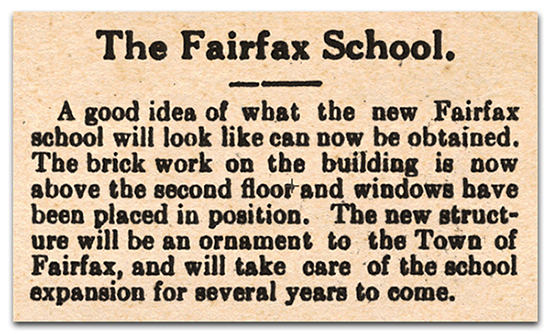
It was hoped that the new Fairfax Elementary School would be completed in time for the opening of schools in September 1924, but heavy snowfall during the winter months caused significant construction delays.
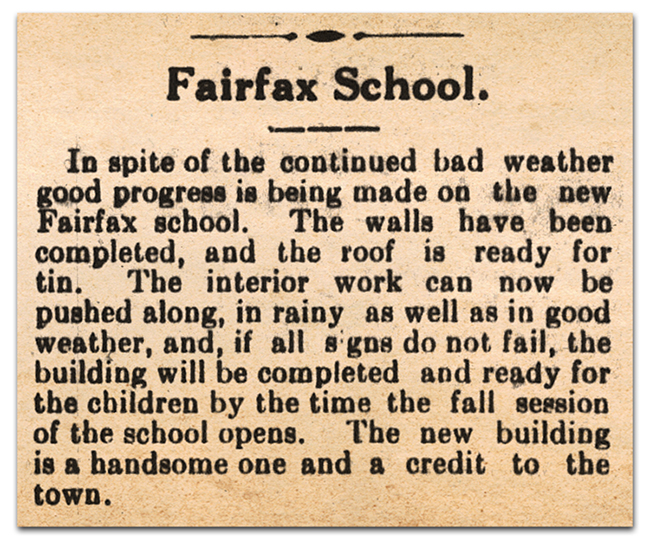
Construction was further delayed when the contractor was unable to secure building materials and hire suitable labor during the spring and summer months. By September 1924, the exterior of the school was nearly complete, and workmen had begun plastering the interior of the building. The Fairfax Herald reported that it was hoped at least one classroom might be available for use during the school year, but subsequent articles show that the building sat vacant until the fall of 1925. In May 1925, voters in the town of Fairfax passed a bond issue to fund the installation of lighting, heating equipment, and a water and sewage system at the new Fairfax Elementary School.
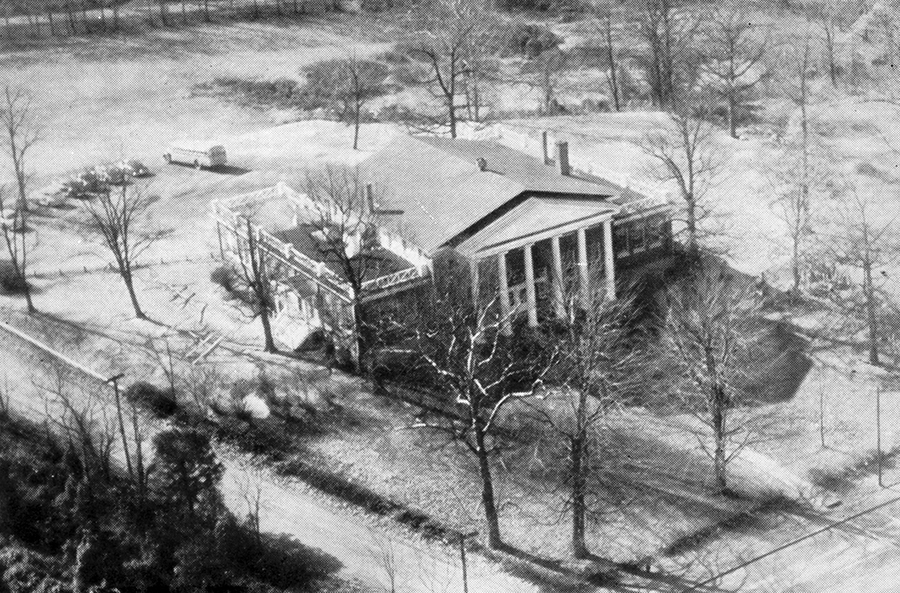
Fairfax Elementary School opened its doors to students for the first time on September 21, 1925. The first teachers were Lillian M. Ellington, Cora L. Hillsman, Faye M. Sprinkel, Janet Trout, and Thomas P. Chapman, Jr. Mr. Chapman, who taught students in seventh and eighth grade, also served as the school’s principal.
Fairfax school opened with a considerably increased attendance, so much so that an additional teacher for the sixth grade will have to be added to the faculty. This will be done within the next few days, it is stated. The new Fairfax School building was in use for the first time Monday, and the teachers and pupils are greatly pleased with their accommodations. The work of cleaning up the school grounds continues, and, within the next two or three weeks, the pupils will have good playgrounds. ~ The Fairfax Herald, September 25, 1925
The Fairfax School
Fairfax Elementary School was built to replace the Fairfax School. Located a short distance west of the new building, the Fairfax School was constructed in 1873 at a cost of $2,750. In 1912, a two-story, hip-roofed addition was constructed to the front of the school. After the opening of Fairfax Elementary School, the Fairfax School was sold to a local chapter of the Ku Klux Klan called the Cavaliers of Virginia. Funding from the sale of the schoolhouse was used to build a new school in the town of Fairfax for Black children. In 1937, the Fairfax County School Board repurchased the Fairfax School for use as a classroom annex to reduce overcrowding at Fairfax Elementary School. In the 1960s, the building housed Fairfax County Public Schools’ (FCPS) first adult education classes. In the early 1990s, the school was transformed into the Fairfax Museum and Visitor Center. The building is the oldest brick schoolhouse built by FCPS which still stands today.
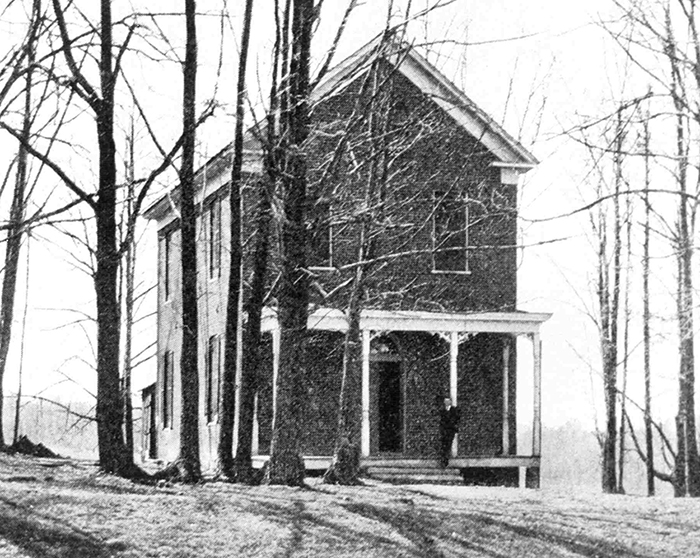
Fairfax High School
Prior to 1960, elementary education in FCPS consisted of grades 1-7. Fairfax Elementary School operated as a one-year high school because it educated children in grades 1-8. Students wishing to continue their education beyond the eighth grade had to travel to Oakton High School.
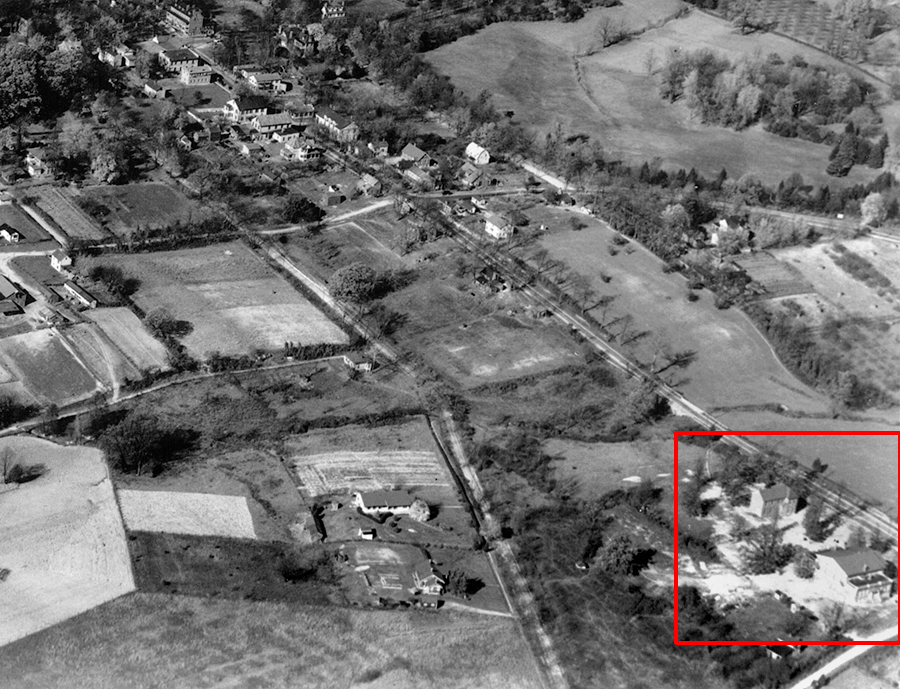
During the 1927-28 school year, the average teacher’s salary at Fairfax Elementary School was $85 per month. In 1930, the School Board requested the state supervisor of school buildings to submit plans for a two-room addition to Fairfax Elementary. The proposed addition was projected to cost about $2,500 per room.
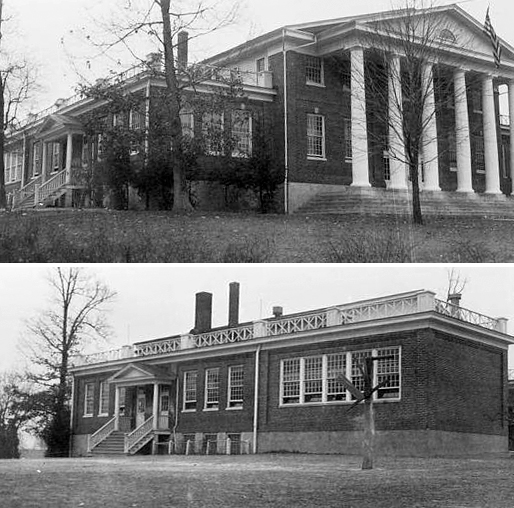
In 1931, Fairfax Elementary School was connected to the Town of Fairfax’s public water system. One year later, in August 1932, Superintendent W. T. Woodson recommended that the eighth grade at Fairfax be discontinued because increased enrollment in the elementary grades had led to overcrowding at the school. The School Board agreed, and Fairfax’s eighth-graders were reassigned to Oakton High School until the opening of Fairfax High School in 1935.
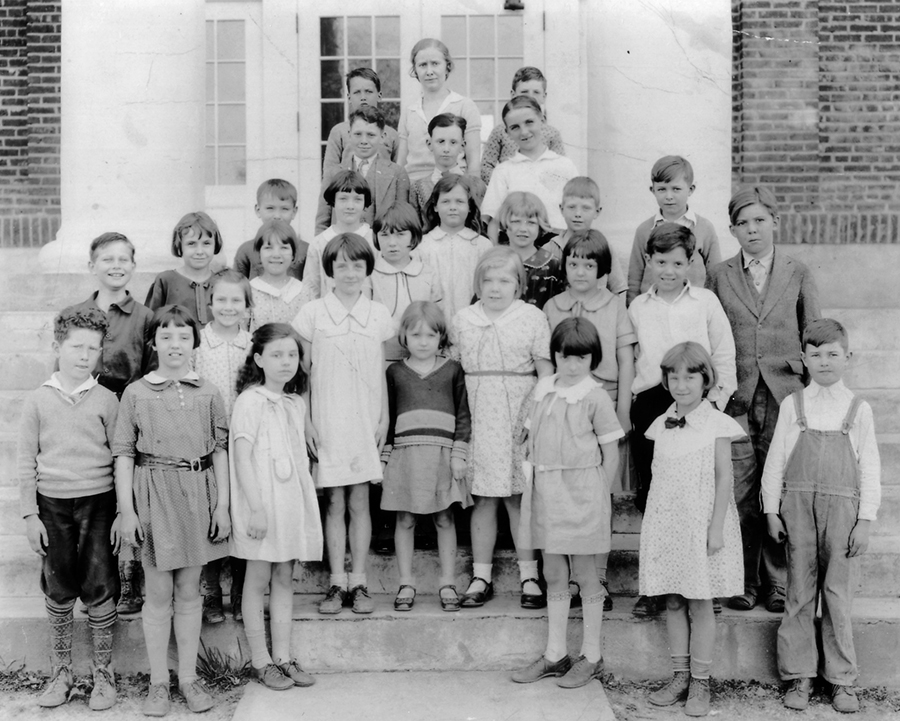
The Great Depression and World War II
During the mid-1930s, the auditorium at Fairfax Elementary School was frequently used by community groups for functions, such as home demonstration club parties, Fairfax 4-H Club meetings, and meetings by the Fairfax County Education Association. In December 1935, 80 Fairfax Elementary students performed an operetta entitled “The Kidnapping of Santa Claus” in the auditorium, and, in May 1936, the Fairfax County Chamber of Commerce screened a film called “Virginia Travelogue Movietone” which showcased the “historic shrines” of Virginia.
In January 1936, Fairfax Elementary School became the first school in the county to have radio equipment installed in each classroom. Three months later, students observed Conservation Week by planting irises and shrubs on the school grounds. After James E. Bauserman became principal of Fairfax in the fall of 1936, the school organized its first student government association and published its first school newspaper. The first student body president was Everett Long, and the first editor-in-chief of the school paper was Priscilla Watson. Fairfax had an enrollment of 308 students during the 1936-37 school year, an increase of 16 children from the prior year.
In the spring of 1940, Principal Bauserman was given permission by the School Board to raise vegetables on the school grounds. After harvest, the vegetables were canned and were used to make soup for undernourished children the following school year.
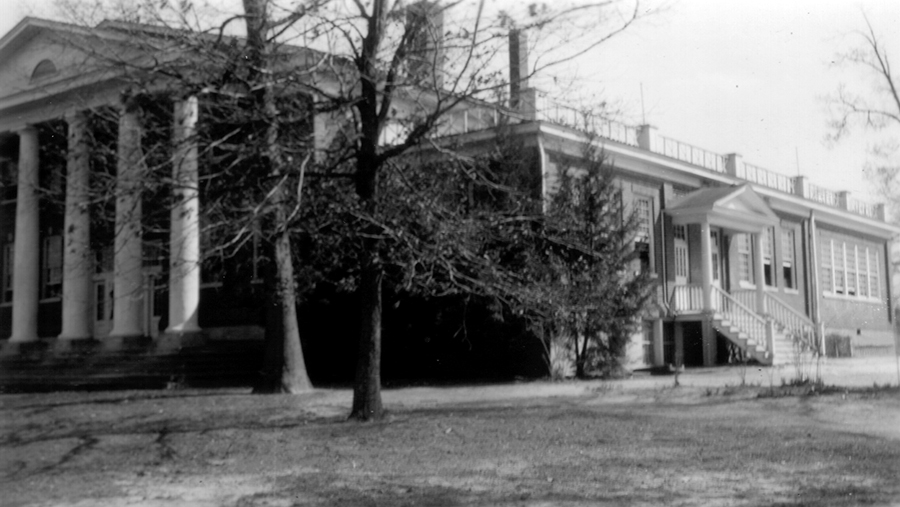
As World War II unfolded, FCPS experienced staffing shortages, as male teachers, custodians, and bus drivers were called into military service and some female teachers left for higher paying positions in the federal government. In November 1944, Martha E. Pace resigned from her position as sixth-grade teacher at Fairfax to take a job with the United States Army Signal Corps.
The Baby Boom
In the early 1950s, increased enrollment at Fairfax Elementary School led to the installation of a Quonset hut behind the building.
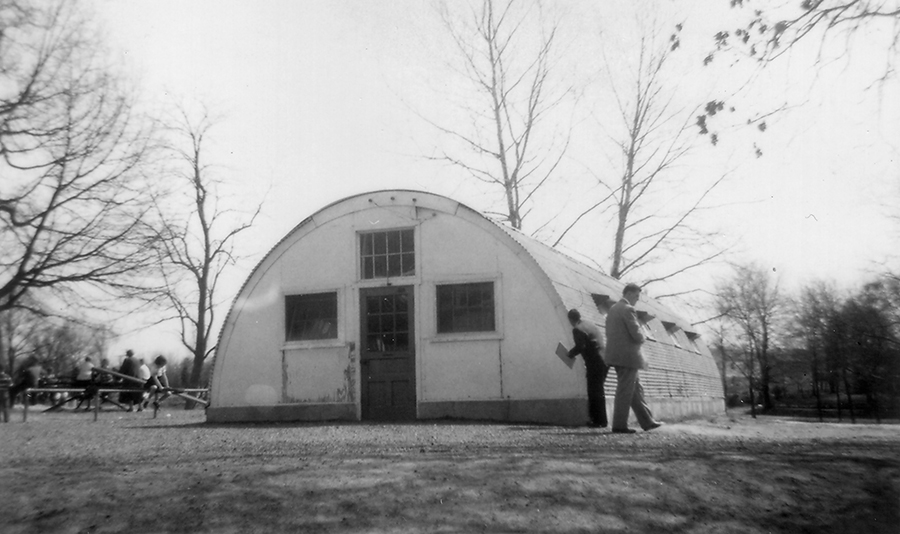
During the 1950s and much of the 1960s, Fairfax Elementary held annual May Day festivals. The festivals included a maypole dance and the crowning of a student as May Queen.
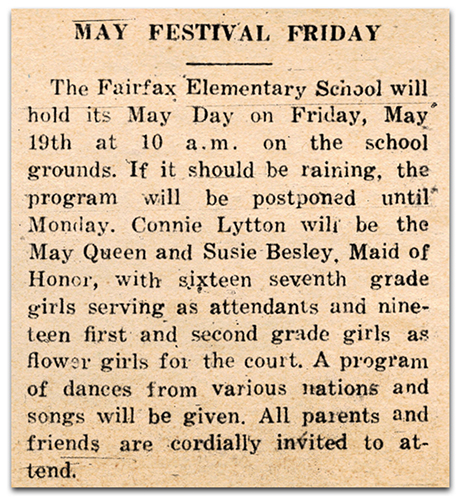
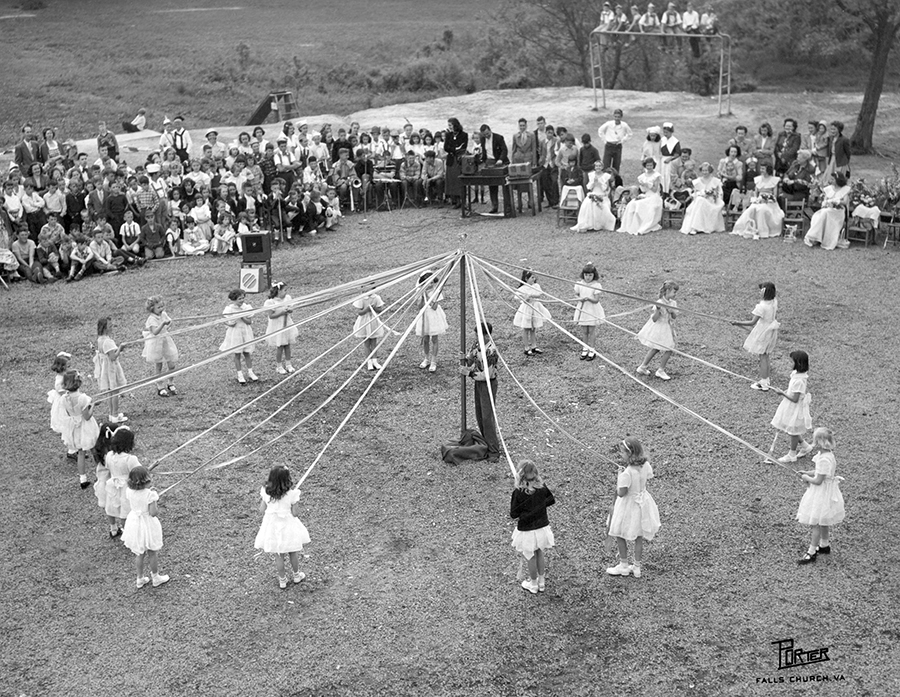
In 1939, we had a maypole with long streamers, and we danced around the pole weaving the streamers. Those were the days. Also, we walked from the school to the city cemetery to commemorate Memorial Day and put flowers on the graves. ~ Katherine Cooke, “Fairfax City, Virginia, The way it once was…” Facebook Group
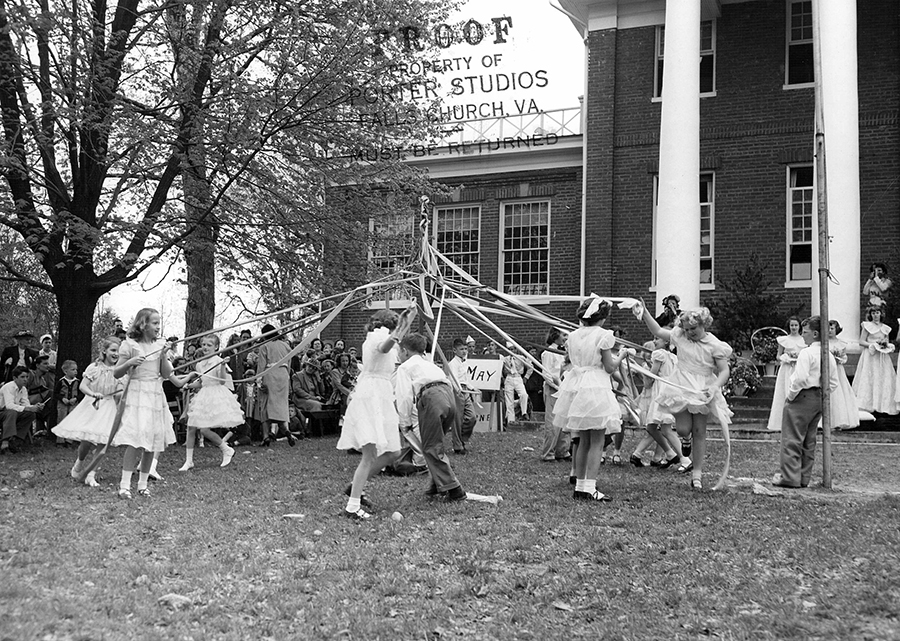
I remember the May Day celebrations, but only vaguely. I started in the first grade at Fairfax about 1947. I recall that we had a "court" and a queen, and her princesses were chosen. We did dress in those pretty dresses with black patent leather shoes. ~ Barbara C. Cain, “You know you grew up in Fairfax if…” Facebook Group
In February 1952, construction began on an eight-classroom addition to Fairfax Elementary School. Built at a cost of $147,783 by Sharpe & Hamaker, Inc., the addition was completed in December 1952. Shortly thereafter, work began on a new cafeteria at Fairfax. The cafeteria was constructed at the rear of the building, which allowed architects to leave space for a small courtyard at the center of the school.
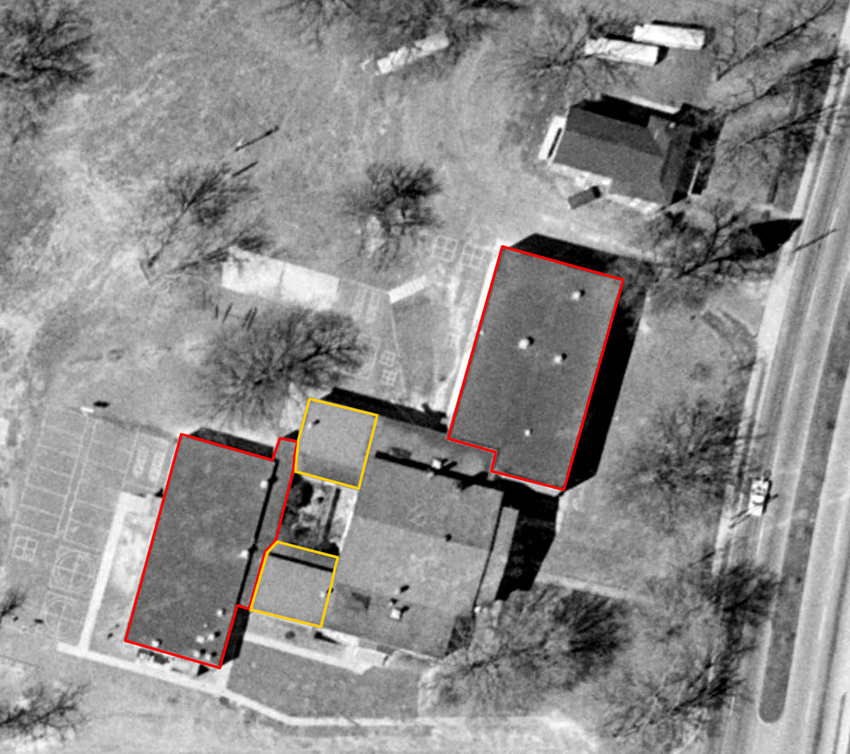
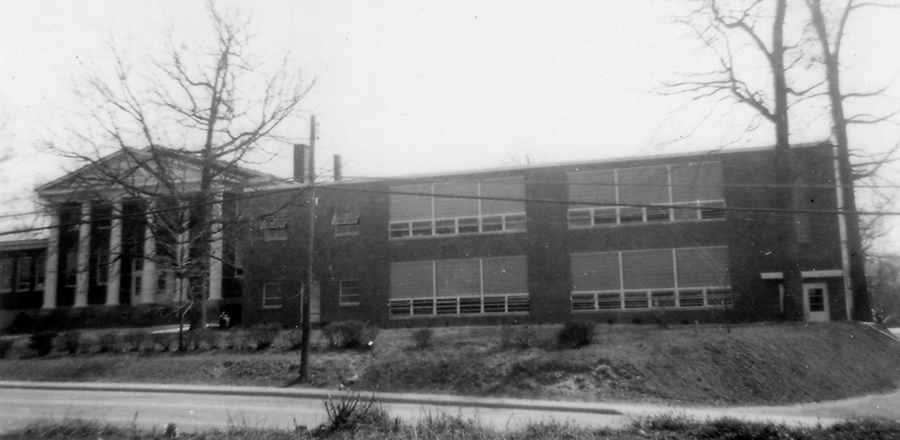
During the 1950s, rapid student population growth led to the construction of three more elementary schools to serve the town of Fairfax, namely Jermantown, Layton Hall, and Westmore. In September 1960, Fairfax Elementary School’s seventh grade classes were reassigned to the new Sidney Lanier Intermediate School. Fairfax operated with grades 1-6 until 1968, when FCPS adopted kindergarten county-wide.
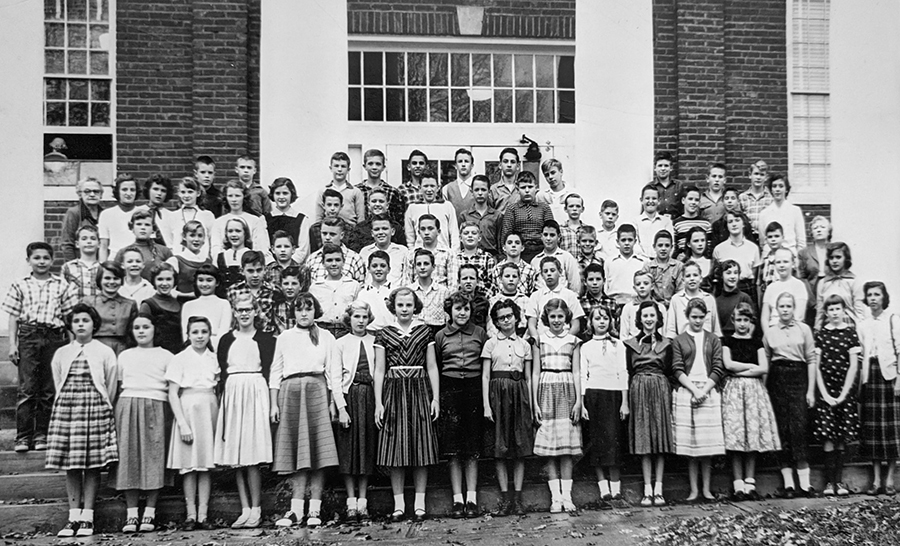
Fairfax in the 1960s
In 1961, the Town of Fairfax incorporated as the City of Fairfax. Shortly thereafter, the city established its own School Board. However, all the public schools within the boundaries of the newly formed city were owned and operated by FCPS. In March 1962, the Fairfax City School Board and the Fairfax County School Board entered into an agreement which stipulated that the city would pay tuition for its students to attend Fairfax Elementary School.
In February 1962, Green Acres Elementary School, then under construction within the city but owned by FCPS, was constituted at Fairfax Elementary School with its own teaching staff under the direction of Fairfax’s principal, Dorothy B. Collier. It was hoped that Green Acres would open in the spring of 1963, but construction delays kept Green Acres’ students at Fairfax for the remainder of the 1962-63 school year.
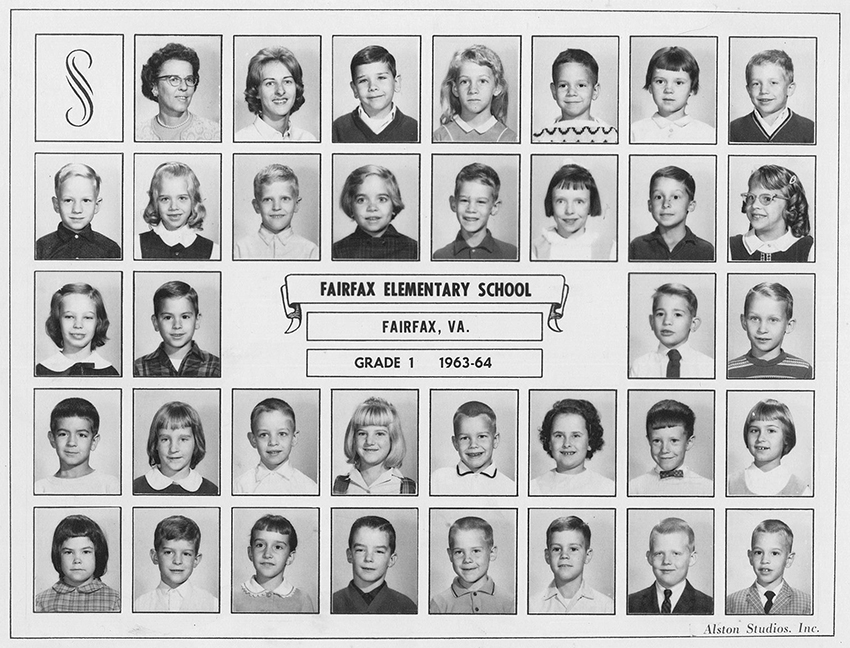
Originally a school for white children, Fairfax Elementary School desegregated during the 1963-64 school year. In September 1964, Fairfax Elementary had a total enrollment of about 400 students, only one of whom was Black. The racial desegregation of FCPS was a slow process which culminated in 1966 with the closing of the county’s last two all-Black elementary schools, Eleven Oaks and James Lee.
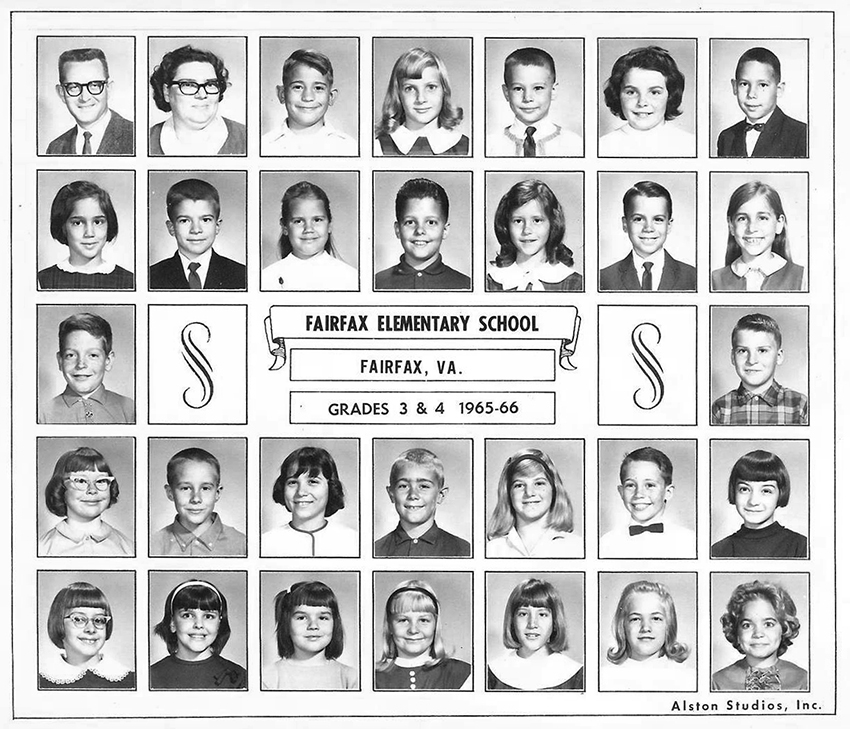
In April 1965, the Fairfax County School Board and the City of Fairfax School Board signed an agreement which transferred ownership of Fairfax Elementary School to the city. After the transfer, FCPS continued to operate the school.
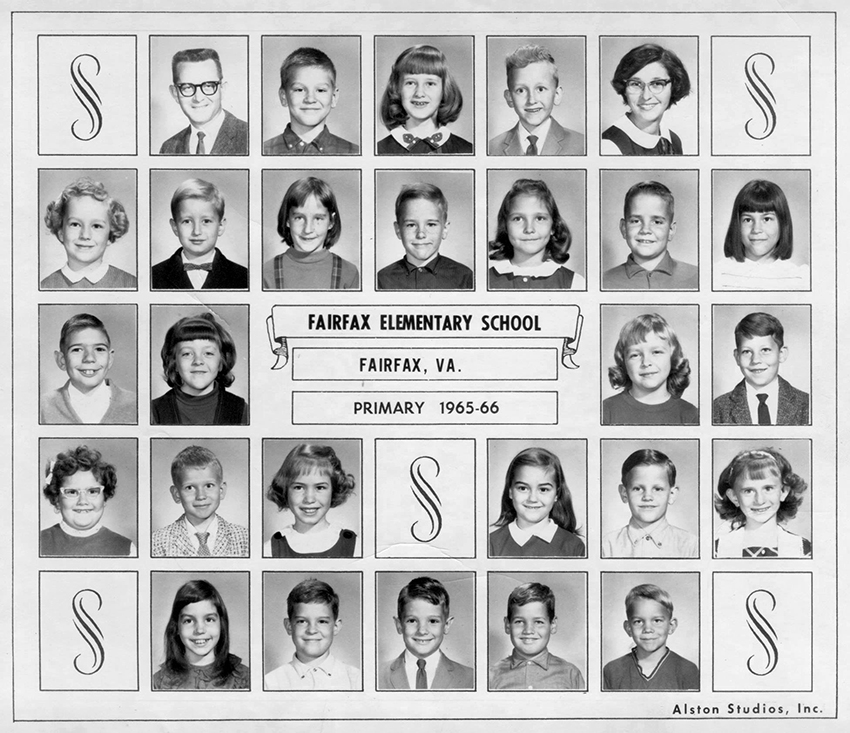
Fairfax Closes
From 1968 to 1976, enrollment at Fairfax Elementary School dropped from 330 to 180 students. During that same time period, FCPS was in the midst of a programmatic shift at the elementary school-level. New schools were being constructed with open classrooms clustered around resource area “pods” that could be divided with movable partitions into separate learning areas. Newly constructed schools also had gymnasiums and specialized classrooms for art, music, science, and special education.
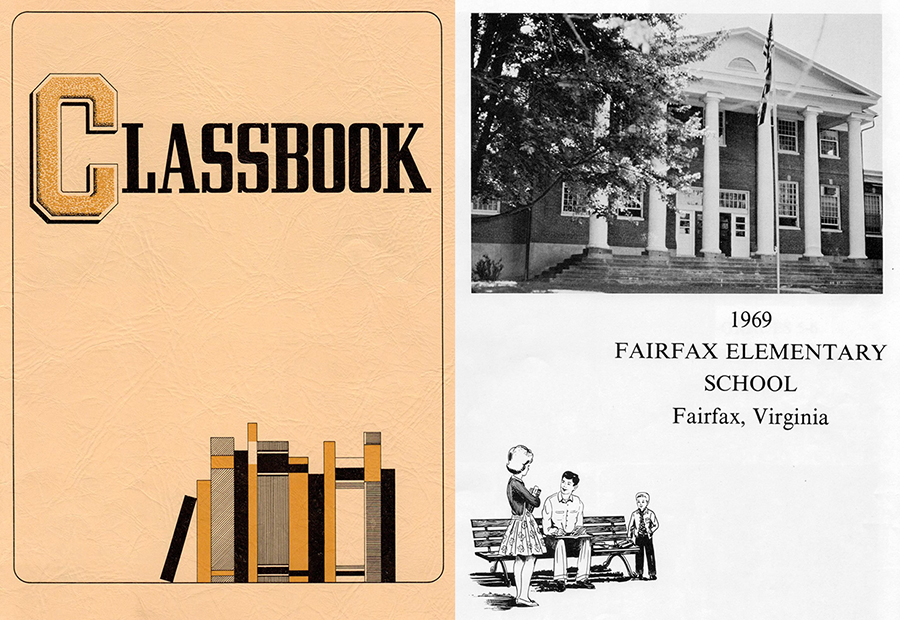
Because of its age, and the small size and topography of the school grounds, Fairfax was deemed unsuitable for modernization. Worried that their children might not be getting the quality of education afforded children at other schools in the city, parents asked that Fairfax Elementary School be closed.
I went there in the early 1970s. I remember the school "store" that we could go to before school started. I never really needed anything, but I learned that it was a popular place to go before school to buy pencils and cute erasers! ~ Margaret Ball, “Fairfax City, Virginia, The way it once was…” Facebook Group
In May 1976, Dr. George Tankard, Superintendent of Fairfax City Schools, sent a letter to the Fairfax County School Board in which he stated that the City of Fairfax School Board had recommended that Fairfax Elementary School be closed. Because Fairfax Elementary was operated by FCPS, the decision to close the school ultimately fell to the Fairfax County School Board. The county school board approved the request and Fairfax Elementary closed permanently at the end of the school year in June.
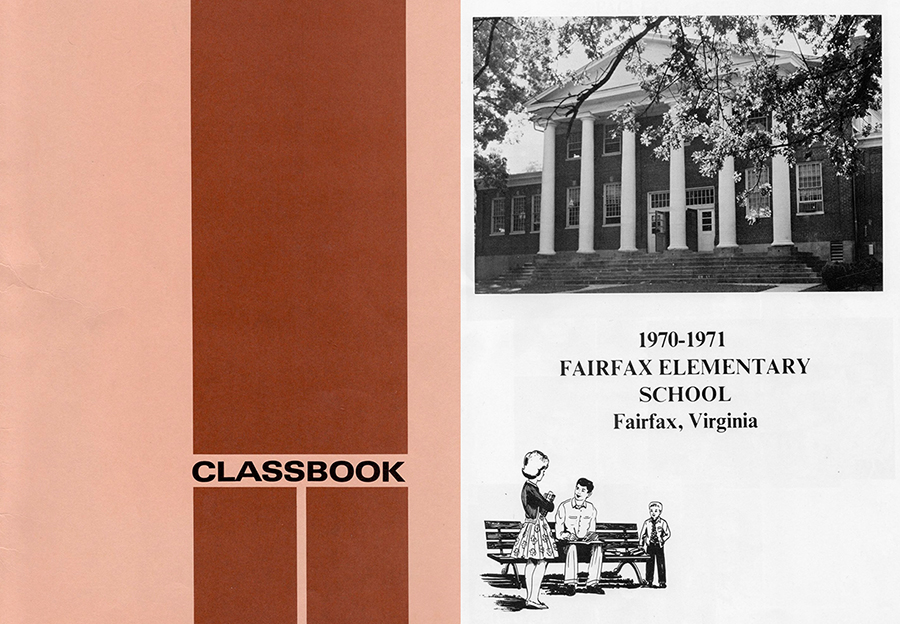
After Fairfax Elementary School closed, the building later housed the Northern Virginia Criminal Justice Academy, an architectural office, and a fitness center.
We had our architectural firm there in the 1990s. Up in the former attic, we cut the trusses in the middle and lowered the ceiling to make a new floor. And sometimes when the guys worked late, they said they could hear young girls laughing. My mother went there in the 1930s. ~ Doug Burke, “Fairfax City, Virginia, The way it once was…” Facebook Group
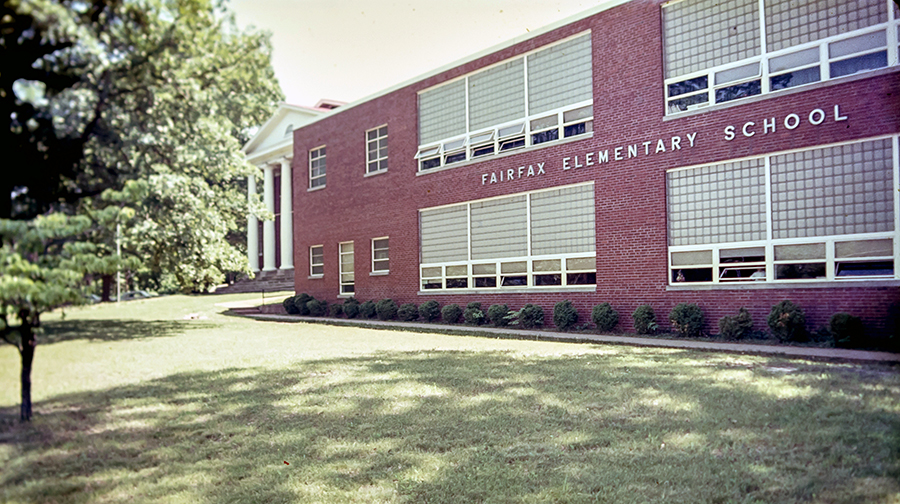
The Principals
The principals of Fairfax Elementary School were Thomas P. Chapman, Jr. (1925-27; 1934-36), Harry Glenn Cunningham (1928-29), Mary O. Ambler (1929-33), William B. Knight (1933-34), Mr. A. P. Compton (1936), James E. Bauserman (1936-40), Lawrence D. Bowers (1940-41), Josephine N. Howdershell (1941-49), Dorothy B. Collier (1949-62), Margaret R. Robinson (1962-64), Dwight L. Smith (1964-66), Peter M. Manno (1966-68), Joyce S. Pittman (1968-74), and Mary W. Hinson (1974-76).